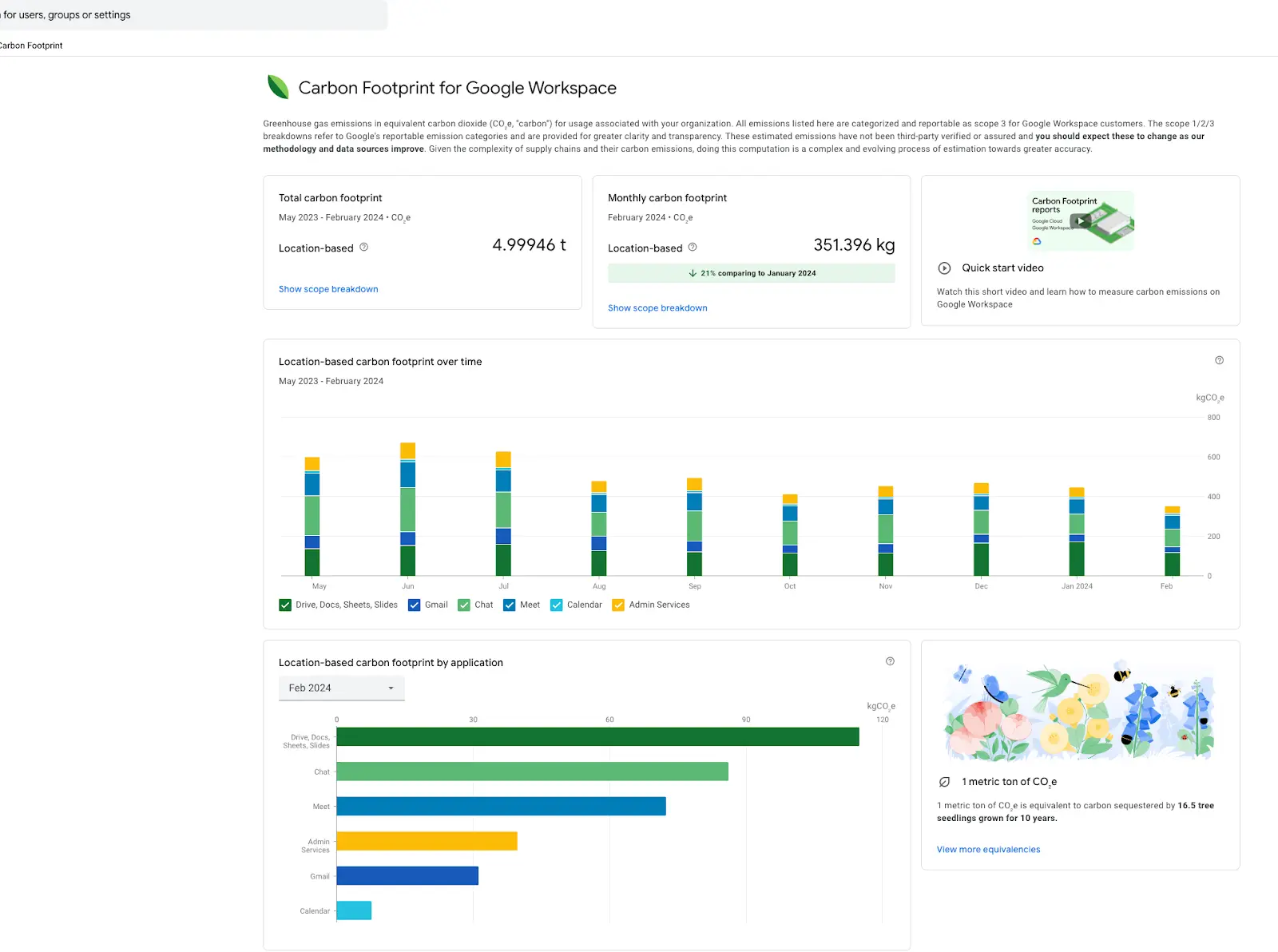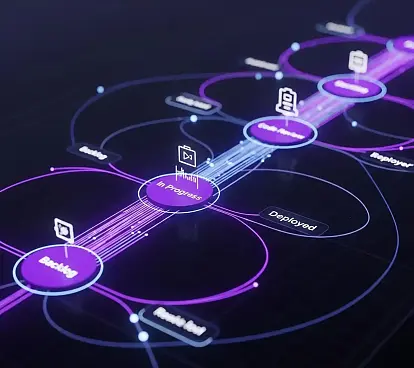
Sustainable Development: Minimizing Digital Footprint and Optimizing Consumption
December 3, 2024
Sustainability has become an essential pillar in the design and development of digital products. Companies have an increasing responsibility to adopt sustainable practices, not only for ethical and regulatory reasons but also for the strategic opportunities this offers. For instance, recent studies reveal that watching four hours of streaming video can generate the same carbon footprint as driving 50 kilometers. This data underscores the urgency of implementing measures to optimize resources, reduce costs, and minimize operational risks.
In our previous article, we explored how to evaluate and design sustainable digital products. This time, we will focus on how to minimize digital footprint, optimize consumption, measure impacts, and apply innovative strategies that allow us to move towards a more sustainable and responsible future.
If you want to delve deeper into these topics, we recommend the webinar Sustainability: AI and Automation for CSRD, where key strategies are explored with experts in the field.
Reducing the Digital Footprint: More Efficiency, Less Impact
Cloud processing, data, and artificial intelligence help you work and grow faster and more efficiently. However, digitalization also entails massive growth in data center usage, which are known for consuming large amounts of energy and water. NVIDIA's latest figures speak for themselves. The company's data center revenue increased by 171 percent in one year, reaching a total of $10.3 billion.
Many companies consider physical resource consumption, but not so much the digital impact, which we don't directly see when programming software. According to a Greenpeace report, in 2017, the ecological footprint of digital internet traffic was already 7% of global electricity. In other words, if the internet were a country, it would be the 6th most polluting in the world in CO2 emissions. Currently, compared to 2017 when the cloud was just a "concept," the impact with AI and macro data centers computing random images for bored people is disproportionate. According to the International Energy Agency (IEA), data centers are expected to consume 400 TWh by 2030, with 40% of this consumption coming from their cooling. In fact, according to a study by ING Digital Wellbeing, each Giga of download consumes 200 liters of water just to cool the servers.On average, four hours of watching videos on a mobile phone pollutes as much as a car traveling 50 km.
We must confront our challenges head-on and seek optimization of all this consumption. Not only will this help reduce the impact, but the efficiency gained by using green code and optimized cloud architecture will also benefit our bottom line. Additionally, by creating more efficient software, we will improve both the usability and performance of our applications or websites. They will also be better prepared for increasingly strict regulations. With the arrival of the CSRD (Corporate Sustainability Reporting Directive), we will soon be required to report the consumption of our cloud and other providers.
Companies like Google and Microsoft are leading the way with their commitments to operate on 100% renewable energy, offering dashboards showing CO2 equivalent emissions. As responsible businesses, we must take advantage of these resources. An Accenture study, in collaboration with the World Economic Forum (WEF), claims that using efficient software can reduce energy consumption by up to 20%.

To effectively address this challenge, at SNGULAR, we have developed a self-assessment tool that allows for a quick analysis of the sustainability maturity, energy efficiency, and resource usage within your company. This exercise helps identify both strengths and areas for improvement, enabling informed and strategic decision-making to move towards a more sustainable future.
Strategies for Creating a Responsible Digital Footprint
Green Coding:
This means designing efficient software that minimizes resource consumption. For example, minimizing unnecessary logging, optimizing input/output (I/O) operations, and reducing network calls. It may also involve considering more efficient programming languages (such as Rust or Go instead of Python or Java when it makes sense). According to a report from the Global e-Sustainability Initiative, adopting green coding practices can lead to a 30% reduction in the energy consumption of applications.
Efficient Algorithms:
Replacing an O(n^2) algorithm with an O(n log n) algorithm for sorting and processing large datasets, for instance, can reduce the CPU time required.
Efficient Testing:
Using automated testing not only to detect potential errors but also to offer suggestions for improving the efficiency and effectiveness of the code.
FinOps and Delivery Excellence:
Implementing the right architecture through these methodologies leads to efficient, measurable cloud management practices that reduce costs, improve agility, and enable sustainable scaling. It’s important to consider the energy source and sustainability plans of your cloud provider (for example, Google is working towards using 100% renewable energy and has reduced energy used for cooling its servers by 40% with DeepMind). Proper and controlled use of cloud services, taking advantage of auto-scaling and shutting down inactive instances, or leveraging serverless architectures, optimizes efficiency. Virtualization and containerization with tools like Docker and Kubernetes help maximize resource usage efficiency. According to an IBM study, companies waste about 32% of their cloud-related spending.
Optimized Data Usage and Storage:
This involves using efficient data structures to reduce the volume of unnecessary data stored and transmitted, employing techniques such as compression or deduplication. These methods can reduce storage requirements by up to 95%.

Traceability and Measurement: Turning Data into Sustainable Action
Another key challenge when addressing sustainability and efficiency is the difficulty of measuring and reporting key results. Both quantitative and qualitative data related to IROs (Impact, Risks, and Opportunities) of the material issues affecting your company must be collected, normalized, and consolidated (the SASBI framework is very helpful for identification).
Many companies manage this with Excel, but to automate and simplify the process, it can be integrated into an Environmental Management System (EMS) or create your own dashboard connected to multiple data sources, linked to process costs, inefficiencies, and associated consumption. You can even connect to the same data sources from suppliers and business partners, ensuring that all stakeholders adopt responsible practices that impact your business.
It’s not enough to make your business sustainable while working with factories that engage in child labor or contribute to marine biodiversity loss. Data Governance, as we’ve done for some clients to optimize their stock process, is also valuable for understanding relationships and impacts between projects, improving quality, management, and the reuse of solutions. Another example is the joint venture we’ve created with Ferrovial to optimize work related to earthmoving in large-scale projects, or the design of mobile factories used in large construction sites, which are efficient and minimize environmental impact through AI, IoT, and data analysis.
This technological integration facilitates alignment with the European Sustainability Reporting Standards (ESRS) and enables more effective compliance with transparency and accountability requirements. Thus, data management under the CSRD is not only a regulatory compliance challenge but also a strategic opportunity to optimize processes, reduce risks, identify opportunities, and enhance decision-making by implementing predictive models and analyzing real-time data.
Another example of this work for a construction industry client was a platform that provides information on the cost and impact of the materials used in each project, along with suggestions to improve the project from both a financial and sustainability perspective.

Governance and Change Management: Key Elements for Leading Sustainable Transformation
This brings us to another crucial point: governance and change management. However, it is not enough to define objectives; it is essential to integrate them into the culture and daily operations of the organization, ensuring the involvement and commitment of all areas. The CSRD not only promotes transparency in reporting but also challenges companies to rethink how they manage their operations, identify risks and opportunities, and plan for the long term.
An effective sustainability plan must be clear, achievable, and accompanied by a strategic approach that enables the identification of the most relevant risks, opportunities, and impacts (IROs). This includes both setting clear objectives and implementing tools that facilitate automation, data governance, and continuous progress tracking.
Leadership also plays a crucial role in this process. Having committed leaders who drive these initiatives and manage change proactively is essential. Anticipating resistance, designing strategies to overcome it, and maintaining clarity of goals are key steps to ensure that sustainability initiatives lead to tangible results.
Methodologies such as OKRs (Objectives and Key Results) are valuable tools for aligning sustainability efforts with the company's overall strategy. For example, a well-designed plan can include specific objectives to reduce environmental impact while maximizing innovation opportunities. Additionally, our course on Effective Sustainability: Regulations, OKRs, and AI can be a practical resource for developing and executing these types of plans. This course provides the necessary tools to identify IROs, implement efficient methodologies, and establish a cultural plan that accelerates the integration of sustainability within the organization.
Ultimately, challenges such as resource depletion and climate change have made sustainable practices crucial for business continuity. Companies that act now to leverage the benefits of sustainable design and development will be better positioned to thrive in the decades to come.
Our latest news
Interested in learning more about how we are constantly adapting to the new digital frontier?

Insight
October 17, 2025
How to transform Customer Experience dashboards into intelligent decisions

Insight
July 31, 2025
The potential of Process Mining in SAFe environments

Event
May 26, 2025
Madrid pulses with the new era of Artificial Intelligence at the Google Cloud Summit 2025

Tech Insight
April 29, 2025
Banco Sabadell supercharges its Galatea design system, with cutting-edge optimization and a groundbreaking validation tool
